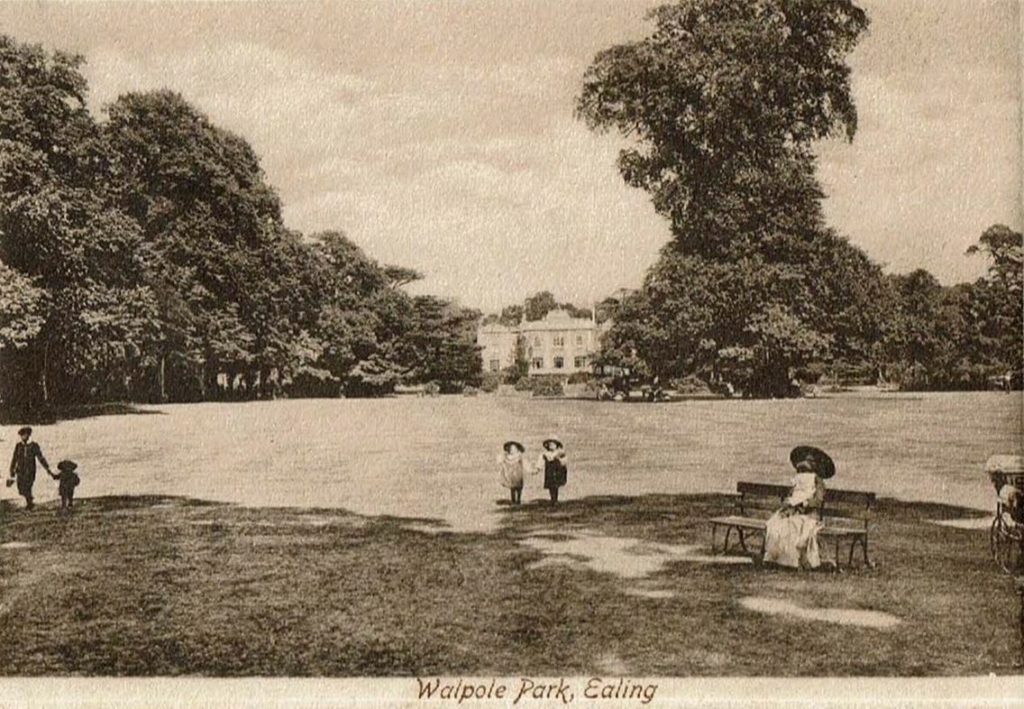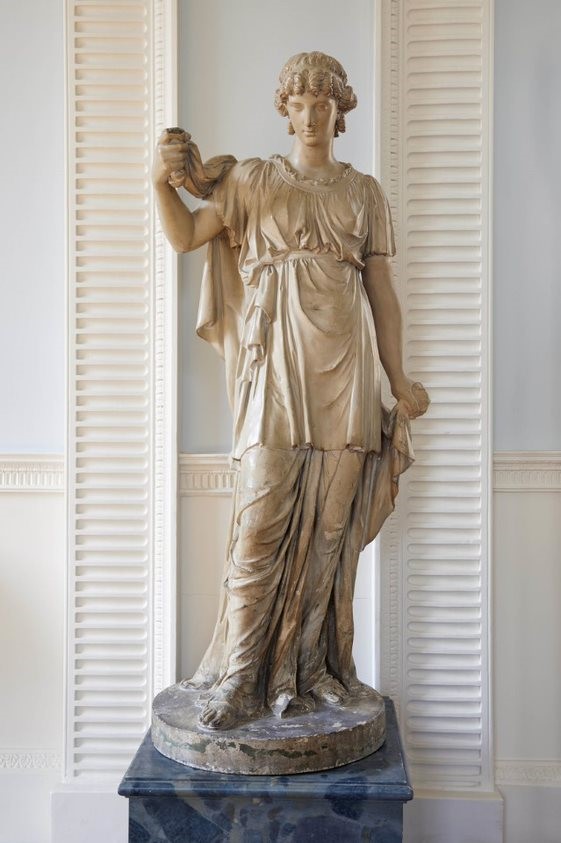
Women’s History Month
Eliza Soane
Pitzhanger Manor is renowned as the best-preserved piece of Architecture designed by Sir John Soane; However, his wife, Eliza Soane, was an important character both in the history of the house and in her own right.
Eliza Soane was born in 1783. Her father was a wealthy merchant and landowner, and her family had connections to the aristocracy. Eliza was home-educated and developed a love for literature and the arts; many of the artworks in John Soane’s extensive collections were chosen and bought by Eliza. Eliza’s role in the Pitzhanger manor was to give it life. When John Soane acquired the house in 1800, Eliza Soane’s diaries detail her role at Pitzhanger Manor. She was instrumental in the development and maintenance of the house and gardens. One of Eliza’s passions was gardening which she brought to Pitzhanger. Eliza ran and maintained the gardens, including an often-used vegetable patch.
Whilst the architecture of Pitzhanger is the famous imagining of Sir John Soane, Eliza had great sway in the interior design; she is thought to have been the one to design and decorate the upper drawing room. Her diaries detail her efforts to decorate the house, including her choices of fabrics and furniture.
Furthermore, Eliza was dedicated to successfully running the household and estate. She gives detailed descriptions of overseeing the Manors staff and fiancés, hosting close friends, family and respectable members of society in regency London.
Eliza’s dairies are crucial to understanding her on a personal level and allow insight into how Regency women engaged with the world and how Eliza perceived current events. Her writings on managing the Pitzhanger manor and her interactions with the staff and servants at Pitzhanger Manor provide an understating of hierarchical relationships in a household of this type.
Eliza was politicly astute; her diaries reveal her opinion on current political affairs, including the Napeoplonic war and her frustration with an all male government:
“How is it possible to reconcile with such inconsistency …surely no good all be done until they chouse a female parliament, for the males talk so much and so little, and the little so badly, that they all appear to belong to the family of the wrongheads”
Eliza clearly shows clear aeration and understating of her limited power as a Regency woman; even so, she continued establishing herself as an essential individual. Eliza Soane maintained a distinctive social circle, often attending social and artistic scenes such as art auctions, the theatre and museums. Her diary reveals her to be a patron of the arts, finding the company of like-minded people and creating a company of like-minded people from which both her husband and she benefited. Eliza was a creative and intellectual individual whose support and social capabilities helped nurture John Soane’s Career and create her representation as a greatly admired woman.
Overall, Eliza Soane’s diary is a rich source of information about the daily life of a Regency-era woman. It provides a window into the private world of a Regency lady and offers insights into the challenges and rewards of managing a large household and estate. In addition, it is a valuable historical document that provides a glimpse into a fascinating and important period in British history.

The Perceval Sisters
The Manor’s longest running occupants were the Perceval sisters. Louisa, Maria, Frances, and Frederica Perceval were prominent figures in Ealing’s history; their involvement in Pitzhanger Manor had a significant impact on the community and the estate. The Perceval Sisters were born in the late 18th century into a prominent family with political ties. Their father, Spencer Perceval, was the Prime Minister of Great Britain from 1807 to 1809. In addition, the sisters were known for their philanthropy; they were passionate about improving the lives of those living in Ealing.
In 1835 Isabella Perceval, another of Spencer Perceval’s daughters, married Spencer Walpole. Her husband purchased Pitzhanger manor in 1843 for her unmarried sisters. The Sisters were determined to restore life to the estate and used their wealth and influence to improve the lives of the local community, and they used their wealth and power to improve the lives of the people of Ealing.
The sisters were known as the ladies of the manor house and became local celebrities around Ealing. Using the estate to create a community in Ealing, they hosted public fairs such as pig races and tea competitions. Markets stalls would be set up regularly under the blessing of the ladies of the manor, creating morale and jobs for residents of Ealing. They were passionate about education and founded several schools in the area, including one for girls. They also supported charitable organisations and were actively involved in local politics. Furthermore, Their involvement in Pitzhanger Manor significantly impacted the community, and the estate became a popular destination for visitors, attracting many notable figures from the worlds of politics, literature, and the arts. The sisters frequently hosted social events at the house, including balls, concerts, and dinners, which were attended by many of the leading figures of the day.
The Perceval Sisters’ involvement in Ealing and Pitzhanger Manor profoundly impacted the local community and the estate. Through their philanthropy, they made a significant contribution to the education and welfare of the people of Ealing; when Frederica, the last surviving of the sisters, died in 1900, Pitzhanger manor was left to the Ealing council. Frederica left money for All saints church to be built in her father’s honour; as he was born in all saints day, the plaque can still be seen in the churchyard commemorating his achievements.
Together, the efforts of Eliza Soane and the Perceval sisters helped to shape the history of Pitzhanger Manor and its surrounding community. Their contributions to restoring the manor and developing education in the area ensured that it remained an important cultural and educational landmark in Ealing for many years. Today, Pitzhanger Manor stands as a testament to their legacies and a reminder of the vital role that they played in shaping the history of this historic London suburb.

Eleanor Coade
Even the building of the Pitzhanger Manor has a woman to thank. An integral part of the elaborate architecture is created by the material Coade stone, invented by the remarkable Eleanor Coade.
Eleanor Coade was born in 1733, she started her career in the family business as a wool merchant, but she soon discovered a talent for sculpting. She created sculptures and architectural ornaments in various materials, including plaster, terracotta, and stone. Her work quickly gained a reputation for its high quality and durability; however, she became frustrated by the limitations of the materials she was using. So, in the late 1760s, Coade began experimenting with a new type of artificial stone. She developed a recipe that combined crushed flint, fine sand, and other ingredients, which she kept secret. The resulting material was extremely hard, weather-resistant, and could be moulded into complex shapes. Coade called her invention “Coade stone” and began using it for architectural ornamentation.
Coade stone was an immediate success. Architects and builders were impressed by its durability and versatility, and it quickly became a popular material for creating decorative elements on buildings, including cornices, friezes, and columns. Coade established a factory in Lambeth to produce the stone, and she hired skilled craftsmen to create sculptures and other decorative elements for clients across the country.
Sir John Soane was a big fan of the Coade stone, often using it for many of his works, especially the decorative elements of the Pitzhanger Manor; John Soane used Coade stone as an ornamental feature for both the editor and interior of the Manor. The embellished parts of the Manor, such as lions, flowers and statues, from the decorative quality of the fringes and friezes are all made from Coade stone. He manages to create classically inspired architecture with the stone’s impressive abilities. Soane was a clear admirer of the stone’s qualities, and we have Eleanor Coade to thank for this remarkable material.

To this day, the restoration and the running of the manor has been kept up by some incredible women. Pitzhanger Manor and Gallery Trust Director Clare Gough highlights this:
“ I think it’s lovely to flag that so many women have worked so hard on the conservation and now on running the Manor, from the many female staff, Volunteers, Trustees and many female advisers across all our committees – we are very strong on brilliant women in the organisation!”
Pitzhanger Manor is glad to have such an enriched past and present with women working together to bring community and culture to the manor and Gallery
Contact Us
PITZHANGER MANOR & GALLERY
Ealing Green, London
W5 5EQ
For ticketing, opening times and tour enquiries, please contact: foh@pitzhanger.org.uk
For retail enquires: retail@pitzhanger.org.uk
Reception: 020 3985 8888
Venue Hire: 020 3994 0966
Office: 020 3994 0967
pitzhanger@pitzhanger.org.uk
Wednesday - Sunday: 10:00 - 17:00
First Thursday of the month: 10:00 - 20:00
Monday - Tuesday: Closed
Bank Holidays: 10:00 - 17:00
Last admissions one hour before closing
